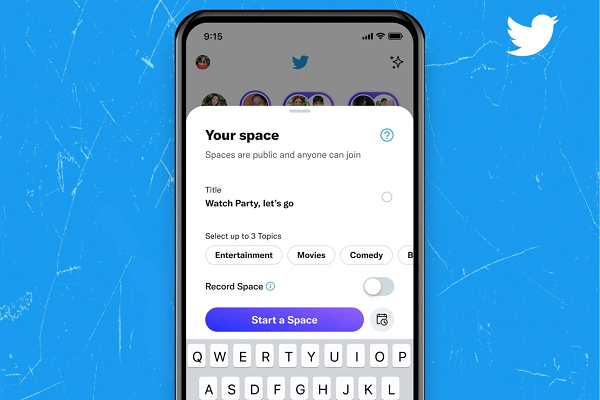Twitter Spaces Starts Allowing Audio Recording for Replay and Sharing
🔴 REC has started
one feature you’ve been asking for is Spaces Recording and the ability to replay. Some hosts on iOS will now be able to record their Spaces and share it out to their audience. pic.twitter.com/Puz78oCm4t
— Spaces (@TwitterSpaces) October 28, 2021
Twitter Spaces will soon allow hosts to record their social audio sessions and share them in new contexts. The new Spaces Recording was released first to those who participated in the original beta for Spaces before other users could start using it.
Recording Spaces
The idea for the recordings is to give hosts a chance to share exciting conversations with more people. It also benefits those who arrive late but want to hear what they missed in the room. Twitter Spaces hosts have to prep their rooms to record the audio by giving them a title and up to three tags to describe the room’s topic of discussion. The Record Space switch can then be flipped on by the host to start recording the room. Those who join the room will see Rec and a red dot at the top of the screen to let them know about the recording in progress. When the room is done, the host simply taps the End button as normal and confirms they want to shut down the room and the recording. The recording can be shared across Twitter, but to bring it to other platforms, users have to ask for a download of their data. The host can delete the recording, but Twitter holds on to audio copies for up to four months in case they need to check it for violations of the platform’s rules.
“Once the Space ends, you will see how many people attended the Space along with a link to share out via a Tweet. Under Notifications, you can also View details to Tweet the recording,” Twitter explains in its outline of the feature. “Under host settings, you will have the option to choose where to start your recording with Edit start time. This allows you to cut out any dead air time that might occur at the beginning of a Space. If you choose to record your Space, once the live Space ends, your recording will be immediately and publicly available for anyone to listen to whenever they want.”
Spaces Time
Twitter Spaces is accelerating its rollout of new features and availability. Spaces only became accessible to everyone on iOS and Android last week, ending the 600-person follower requirement after first encouraging more teamwork with the co-hosting option in August. The company is experimenting with giving the social audio platform its own dedicated tab on its app and website and just revamped its invitation process to make it easier for hosts to invite participants. Twitter’s jockeying with Clubhouse and other social audio platforms for market share has grown in intensity as they all rush to stand out fill in any features gap. Clubhouse just debuted a new Music Mode to raise the audio quality of performances, augmenting the Spatial Audio option from the summer. Both go with the audio editing and export Clips feature, which lets users bring some of their Clubhouse conversations to social media and podcasts. There’s even more direct competition for innovative social audio creators as Twitter started accepting applications for its new Spark accelerator program. Clubhouse’s Creator First program began earlier this year with 25 shows but has had enough success for Clubhouse to launch country-specific versions for India and Brazil.
Follow @voicebotai Follow @erichschwartz
Clubhouse’s New Music Mode Tunes Performances to Higher Quality Stereo Sounds
Twitter Spaces Opens Spark Social Audio Accelerator to Support Creators









